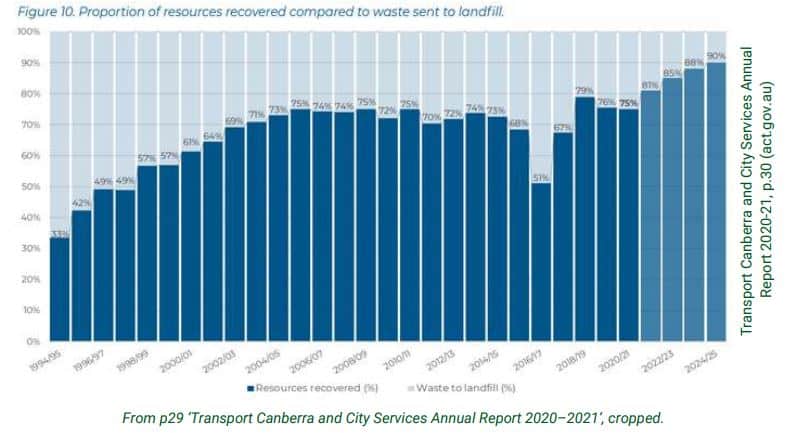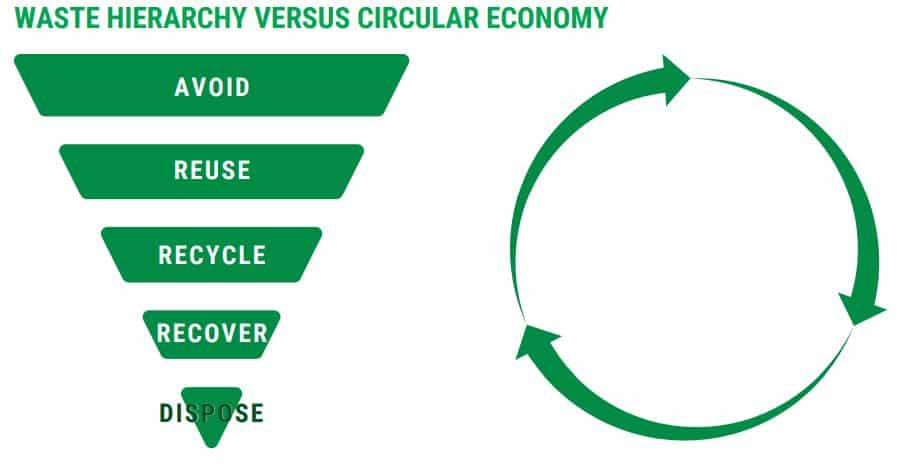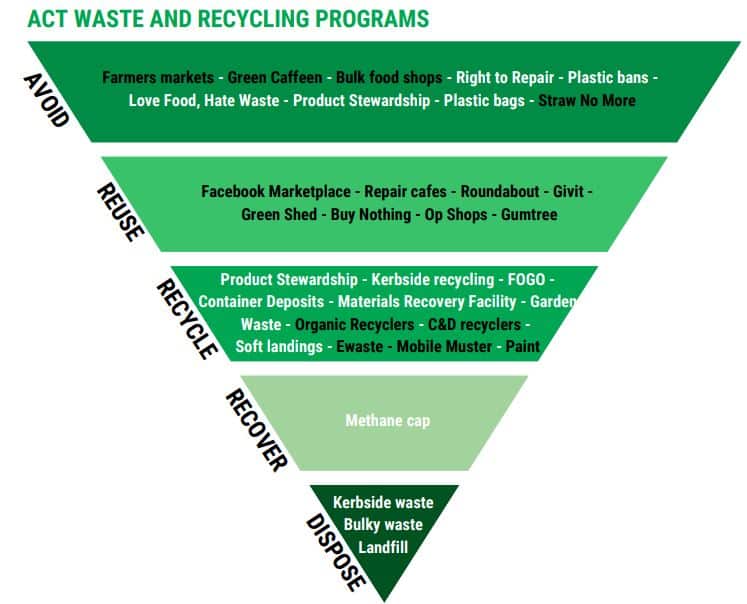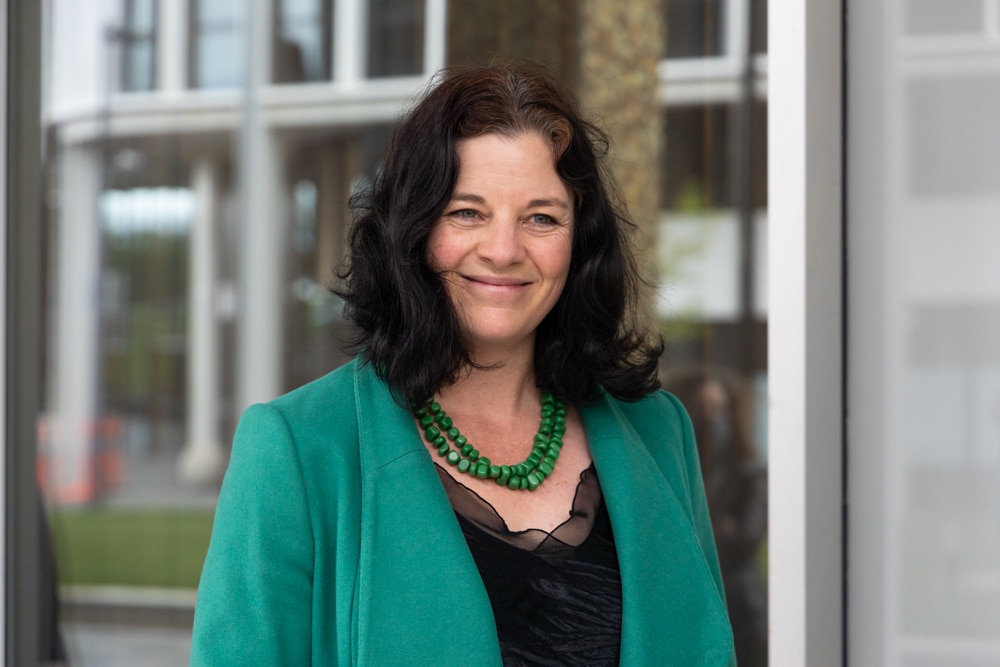Canberra produces one million tonnes of waste every year – waste that pollutes the environment, squanders natural resources, and increases greenhouse gas emissions. Greens MLA Jo Clay believes we can and must do better.
“It is a fundamental problem with our economy, and we need a new approach,” Ms Clay said.
Her solution is the circular economy: a system that has no waste, where everything becomes a resource used elsewhere in the circle. In the Vision for our Circular Economy, released this week, she sets out ways to achieve that future, and explains why we shouldn’t waste an opportunity to reduce waste.
“Endless consumption on a finite planet does not work, and we must do things differently if we want a sustainable future,” Ms Clay said.
Ms Clay is ACT Greens spokesperson for the Circular Economy. Before entering politics, she founded an award-winning office paper recycling company, Send and Shred, and designed the Carbon Diet to cut her carbon footprint by more than 75 per cent.
- Jo Clay MLA: Our right to a healthy environment (7 February)
The ACT has set a target of zero emissions by 2045; it achieved renewable electricity by 2020; it is phasing out single-use plastics; it has introduced the Food Organics and Garden Organics recycling scheme; and it recently committed to phase out fossil-fuel vehicles and switch from gas to electricity over the next two decades – all ambitious, nation-leading initiatives.
But waste remains a problem, according to conservation experts.
- ACT a ‘nation-leader’ in renewable energy (4 December 2020)
- Plastic straws will be banned from July (23 May)
- More major ACT events to go single-use plastic free (8 March)
- New recycling facilities to cut ACT emissions by nearly a third (8 August)
- New food, garden waste composting facility to open in Hume (25 March)
- Zero emission vehicles will be ‘easier and cheaper to access’, ACT Government says (20 July)
- ACT to phase out fossil-fuel powered vehicles by 2035 (18 July)
- ACT reveals pathway to electrification (4 August)
In the 1990s, the ACT set the world’s first zero waste target: “No Waste by 2010”. Although partly effective – it achieved a resource recovery rate of 75 per cent total waste generation – waste and recycling have plateaued for the last 15 years, Ms Clay said.

Waste generation has increased as Canberra’s population grows, and the ACT is still sending as much waste to landfill as it did a decade ago. The ACT Government has since changed goals, Ms Clay explained: its target is now 90 per cent of resource recovery by 2025 – higher than the federal target of 80 per cent recovery by 2030, but still a far cry from total recovery.
“Our recycling rate has stayed about the same for around 15 years, which tells me we’re not really fixing the problem anymore,” Ms Clay said. “The problem is we’re not thinking of new ideas, we’re not thinking about it in the right way.”
Traditional waste management is ‘triangular’: a hierarchy with waste to landfill built in. While avoiding waste is ideal, governments traditionally spend most on disposing of waste.

In the ACT, $503 million (8 per cent of the budget) was spent on city services in 2020–21, and $67 million on recycling or disposing of waste, rather than on avoidance programs and education.
“Most of our money, most of our effort, is going into disposal and recycling lower down,” Ms Clay said.
The ACT’s last comprehensive waste management strategy was in 2011. The ACT used to publish audits of household bin waste, landfill and transfer station waste, and Materials Recovery Facility waste every two years, but the last audits of waste were in 2014 and 2015. Audit reports will, however, be published by the end of the year. Mia Swainson, of Zero Waste Revolution, thinks this is necessary; according to the last bin audit, 10 per cent of an average household’s waste to landfill was not sorted correctly, and should have been recycled.

“We were thinking about waste; we actually need to think about the circular economy,” Ms Clay said.
“We need to think about what we need, and how we make sure that everybody gets what they need in a way that doesn’t destroy our planet, in a way that is sustainable, in a way that we’re not making things that we need to dispose of when we’re finished with them. And that’s a different way of thinking about the problem.”
“Canberra is a consuming city,” Helen Oakey, executive director of the Conservation Council ACT Region, said.
Its ecological footprint is nine times the size of the Territory, and it has the second largest per person carbon footprint in the country. Greenhouse gas emissions from general consumption, in fact, are nearly 16 times higher than direct emissions. 6.4 per cent of the ACT’s climate emissions come from activities within the city (which Ms Clay notes 100 per cent renewable electricity and other policies have effectively targeted); but 93.6 per cent come, in Ms Clay’s words, from “the food we eat, the stuff we buy, the buildings we construct”, as the Commissioner for Sustainability and the Environment’s 2021 report, Scope 3 Greenhouse Gas Emissions in the ACT, shows.

Modern society, according to Ms Oakey, is “a short-sighted, take, make, waste system”. It is, Ms Clay argues, based on in-built redundancy, online shopping, fast fashion, and fast furniture. Marketers create fear, anxiety, and discontent, and offer a false solution to manufactured problems. “We must consider the psychology behind a system that sells people things they don’t need, and then blames them for creating waste we can’t recycle”.
“A truly sustainable future requires a paradigm shift when we understand that our economy has to be embedded within the planet’s natural limits,” Ms Oakey said. “A circular economy is one that questions every step of the journey.”
The circular economy has three principles: design out waste and pollution; keep materials in use; and regenerate nature.
Chris Steel, Minister for Transport and City Services, will publish the ACT’s circular economy strategy later this year.
Already, Ms Clay noted, the ACT Government has several programs and achievements that fit into the circular economy framework. Product stewardship (where manufacturers, retailers, and users share the responsibility for the environmental impact of products, with less waste in the design and recycling schemes for any end-of-life waste); or Love Food, Hate Waste (planning and creating meals that don’t waste food), for instance.
Shane Rattenbury, Minister for Consumer Affairs and for Water, Energy and Emissions Reduction, is championing the Right to Repair movement (pushing back against built-in redundancy that forces people to replace goods earlier than they might like) nationally.
Rebecca Vassarotti, Minister for the Environment, is working on the ACT’s first ‘Food and Fibre’ strategy (growing more of Canberra’s food locally, and having a full chain paddock to plate circle), and developing policy for sustainable building and construction.
- Op-ed: Food security matters now more than ever (23 February)
Private sector businesses are already operating in the circular economy, Ms Clay observed. The Green Shed diverts 8,000 tonnes of waste from landfill each year, offsetting half the ACT’s carbon emissions from waste. Canberra Sand and Gravel and Corkhill Bros’ drop-off garden waste composting businesses have redirected vast quantities of organic waste from landfill and into soil-improving composts and mulches. Capital Scraps, Goterra, and Global Worming are food and garden waste recycling businesses. Local design charity S.C.E.N.E. uses 95 to 100 per cent used items and materials, including crockery and jewellery from recycled plastic.
Similarly, Mia Swainson’s Zero Waste Revolution educates Canberrans how to waste less.
Ms Oakey believes the ACT Government can influence Canberrans to waste less through stronger procurement processes. She would particularly like it to regulate the construction sector, which is responsible for 9.3 per cent of ‘Scope 3’ emissions, and reduce emissions in building and infrastructure. The government could set targets for low-carbon products; incentivise reusing existing materials through salvaging and repurposing timber and steel; incentivise maintaining buildings; and adopt smart technology to track supply chains. At the moment, too, scientists are developing low-emissions concrete.
“For big business, this is the next emissions challenge, this is the next climate challenge,” Ms Oakey said. “Businesses will save money, keep customers, and be more sustainable if they start to think about how they can operate in a circular system.
She urged Canberrans: “Think creatively about how we close the loop on last century’s take, make, waste production and consumption, and move to a really sustainable way of living on this Earth, which we need to protect for future generations.”
Get local, national and world news, plus sport, entertainment, lifestyle, competitions and more delivered straight to your inbox with the Canberra Daily Daily Newsletter. Sign up here.



